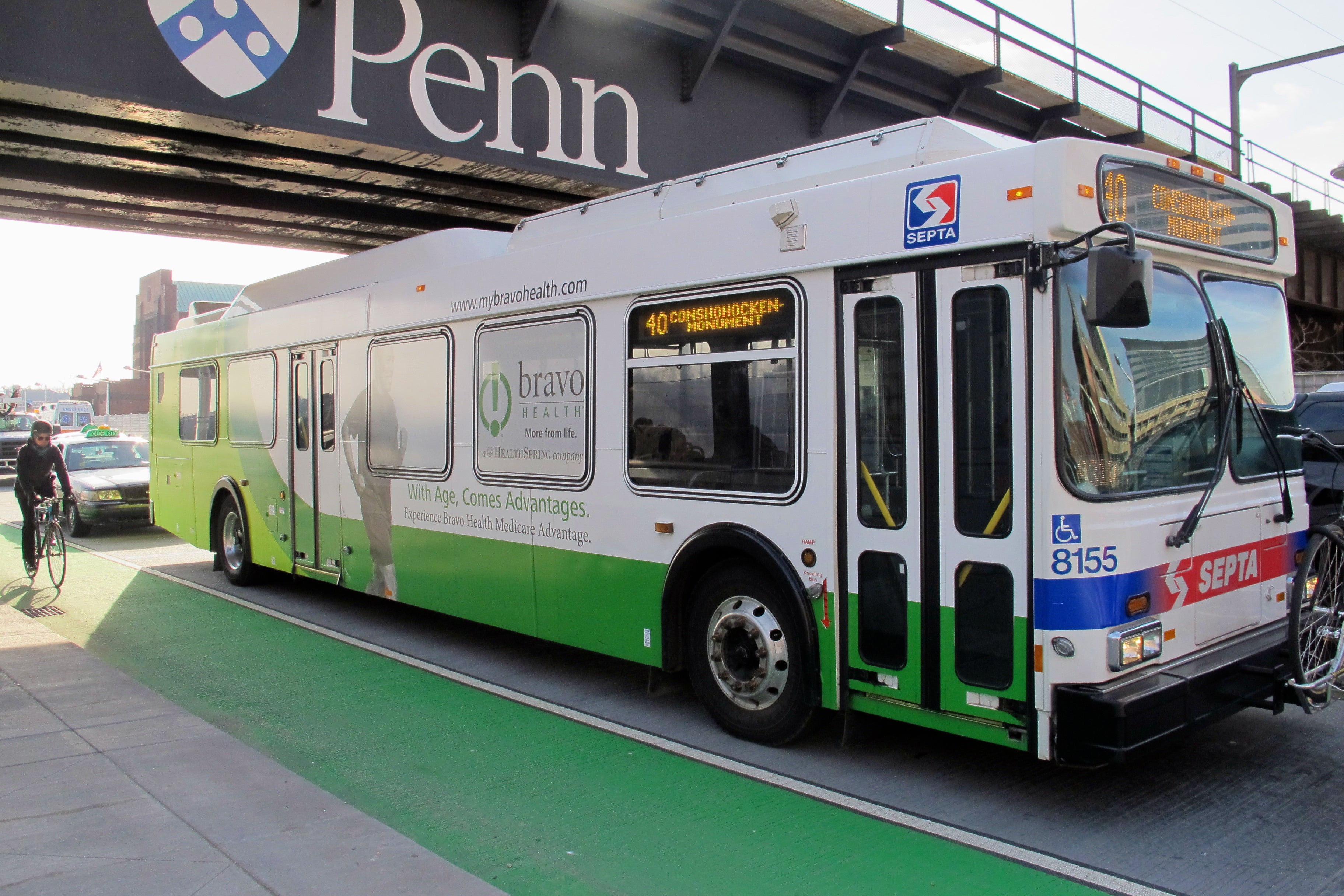Sharing the road: SEPTA, City discuss bus-bike tensions

The conflicts between bicyclists and drivers are long standing and perhaps a bit tired, especially as more pedallers take to the streets. But there is another area of tension that gets less attention: the convergence of buses and bicycles.
Last week SEPTA, the Mayor’s Office of Transportation and Utilities (MOTU) and Bike Temple came together for a panel discussion on bus-bicycle relations hosted by Temple University’s Office of Sustainability and moderated by Bradley Flamm, assistant professor in Temple’s community and regional planning department.
“Lots of really interesting things are happening … but to be sure, travel in the region is not all rosy,” Flamm said. “There are still some challenges.”
The tensions between cyclists and drivers “are not limited just to bicycles and motorists,” he said. “We see it also between bicyclists and bus drivers.”
SEPTA has more than 2,700 bus and trolley operators, and turnover for these positions is relatively high. Each year SEPTA hires approximately 200 new bus and trolley drivers, and each driver is trained to deal with people both inside and outside of the vehicle.
“I can tell you bicyclists are among the most difficult and vulnerable people that our operators will encounter,” said Josh Gottlieb, director of administration and finance in SEPTA’s surface transportation division.
Part of the problem is that bus drivers cannot see what is happening directly behind the bus. Drivers usually spot bicycles that are gaining on them in the sideview mirrors, so bus drivers are not always able to follow the “creative” riding of cyclists who weave from one road position to another, Gottlieb said.
Monitoring the movement of bicycles is just one task bus and trolley drivers must perform.
“The responsibilities that are put on them are pulling them in a lot of directions at the same time,” Gottlieb said. “There’s a lot going through their minds at all times.”
For cyclists, buses can be intimidating or frustrating, especially in instances of “leap frogging” or when cyclists get stuck behind a bus on a narrow one-way street. Organizations like Bike Temple do what they can to educate cyclists on rules of the road and how to avoid those potentially conflict ridden situations.
Some cyclists get caught off guard by buses they do not hear approaching from behind, said Blake Larson, Bike Temple coordinator. Gottlieb said SEPTA does recognize that the newer hybrid buses are significantly quieter than the diesel buses, and SEPTA has plans to increase the number of hybrids in the fleet.
Another point of tension is the bicycle racks on the front of buses.
“If you’ve never [used one] some people avoid it because they feel it’s a potential point of tension,” Flamm said, explaining that cyclists might not want to fumble with the contraption or slow the bus.
Larson said the rack itself is easy to use, but the first use can be intimidating. SEPTA is aware of this and is in the process of developing an instructional video that will be posted online. Sample bus bike racks are available at a few Philadelphia universities, and Becky Collins, SEPTA strategy and sustainability planner, said she hopes to get sample racks placed at some of the higher trafficked transit stations.
For its part in mediating bus-bike conflicts, MOTU tries to put new bike lanes on roads with less bus traffic, especially on north-south routes. If the City can find opportunities to put “different modes on different roads” it will, said Charles Carmalt, Bicycle/Pedestrian Coordinator at MOTU.
The City is also looking to build bike lanes on the left side of the road where that’s possible. Fairly recently, the city implemented left-lane bike lanes on Walnut Street from the Walnut Street Bridge through University City to 63rd Street. This separates bus traffic from bicycle traffic, and it has gone over well on the Walnut Street lanes, Carmalt said.
Of course not all streets can handle left-lane bike lanes, or any bike lanes for that matter. On some of the city’s narrow streets buses and bikes must share one lane.
“The streets we’ve inherited are the streets we have,” Carmalt said.
In those cases, Carmalt advises riders not to be afraid of the vehicle behind them, but if there is an opportunity to pull to the side, cyclists can be courteous and let drivers pass them.
Resolving bus-bike tensions is an ongoing process and will require educating both bus drivers and cyclists, but advocates on both sides of the issue seem willing to work together.
Gottlieb said if there are hot spots of tension cyclists can report those areas to SEPTA. Cyclists should also report any problematic incidents they might have with a specific bus. In those cases, cyclists should include the date, time, location and bus number.
“Where they exhibit bad behavior we want to deal with it,” he said.
Reports can be made to SEPTA customer service at (215) 580-7800 via the online comment form or on Twitter using the @SEPTA_Social handle.
WHYY is your source for fact-based, in-depth journalism and information. As a nonprofit organization, we rely on financial support from readers like you. Please give today.






